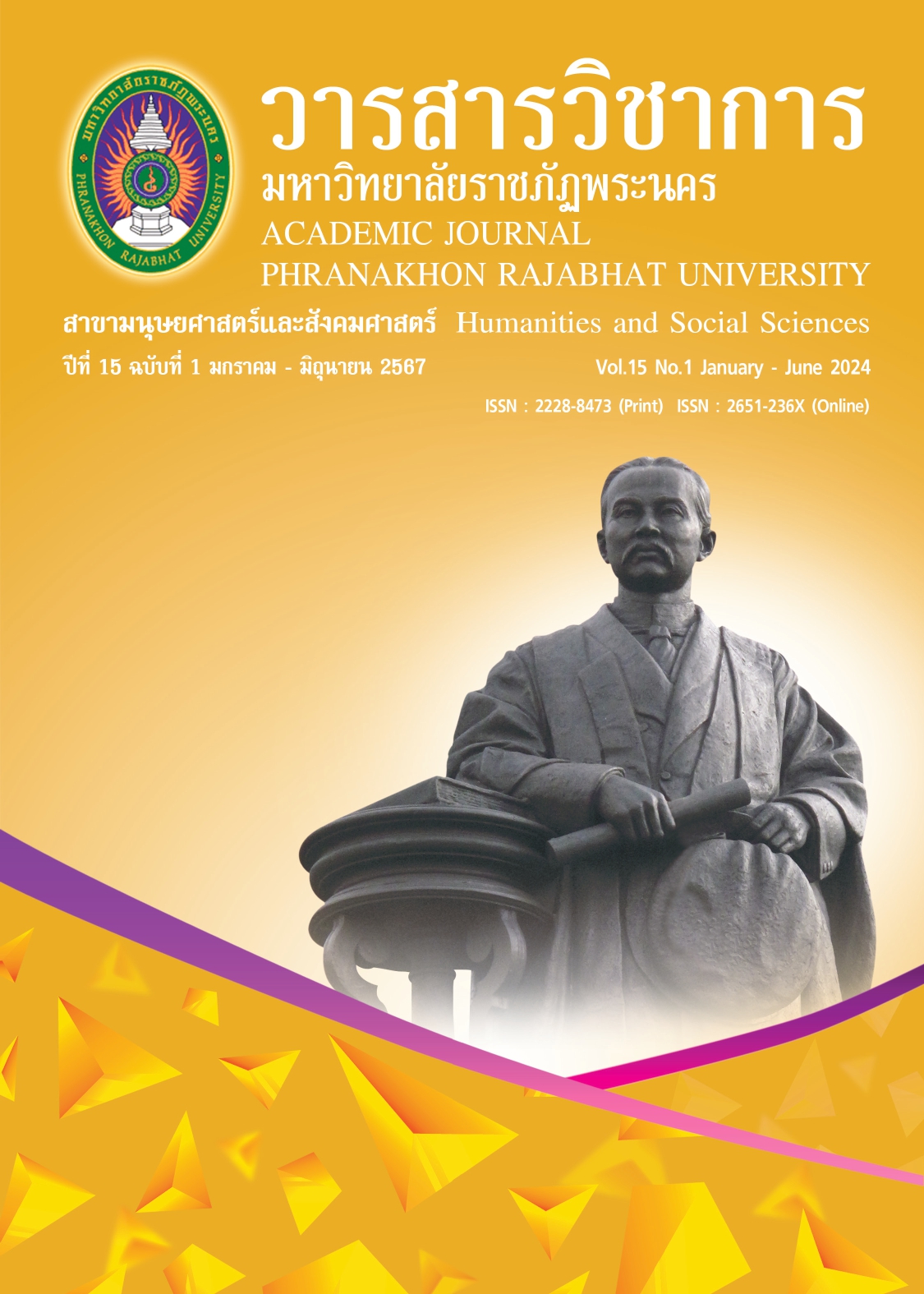GUIDELINES FOR REDUCING WATER HYACINTH CONSUMPTION TO CREATE PARTICIPATORY PRODUCTS OF BANG LEN COMMUNITIES BANGYAI NONTHABURI
Keywords:
Water Hyacinth, Product Development, Solutions, ParticipationAbstract
This research aimed to: 1) study the guidelines for participatory management of water hyacinth, 2) examine the model of participatory community products from water hyacinth, and 3) create innovations using water hyacinth through participatory action research. The research area was Bang Len community, Bang Yai District, Nonthaburi Province. The key informants include three groups: community members, local government representatives, and design experts. Research tools included group discussions, interviews, design evaluation forms, and questionnaires. Data analysis involved content analysis, percentage, mean, and standard deviation. The research findings were as follows: 1) the guidelines for participatory management of water hyacinth involved strengthening collaboration networks among local government agencies and community members by preparing water hyacinth management equipment and applying community knowledge to address problems sustainably and add value to water hyacinth. 2) The suitable product model for the community was flower crafts made from water hyacinth, which received an overall rating at a good level with a mean score of 3.97 (SD 0.55), and 3) innovation using water hyacinth resulted in sound-absorbing wall panels made from water hyacinth. These panels had a 60:40 mix ratio of gypsum to shredded water hyacinth fiber, with the addition of CMC at 0.2 of the gypsum weight. The panels were in a hexagonal block shape, measuring 25 cm x 25 cm x 2.5 cm. Water hyacinth wall panels effectively absorbed sound in the low-frequency range up to 4,000 Hz, attributed to the air gaps in the gypsum mixture with water hyacinth fibers. The sound absorption coefficient ranged from 0.93 to 0.99.
References
Bang Len Subdistrict Municipality. (2020, 23 July). Activity “Volunteers to develop
rivers and canals”. Bang Len Official Correspondence. Nonthaburi. (In Thai)
Buakhiao, P. (2011). Guidelines for developing community products. Retrieved
from http://research. pbru.ac.th/web/attachments/244_product_
community.pdf [2021, 20. Jul.] (In Thai)
Chubandit, S. (2014). Water hyacinth a national problem: Water hyacinth
eradication law. Bangkok: The Secretariat of the Senate. (In Thai)
Chumket, J (2017). Developing products from local wisdom to increase the
efficiency of sustainable community management of the Thai Muslim
community, Cha-am District, Phetchaburi Province. (Research Report).
Nakhon Pathom: Silpakorn University. (In Thai)
Department of Local Administration. (2021). Guidelines for eliminating water
hyacinth. and weeds in financial year 2021. Retrieved from
https//www.dla.go.th/upload/document/type2 /2021/10/26252_2_
pdf [2022, 20. Jul.] (In Thai)
Ngamwavitroj, B., Charoenphanthun, S., Kuruvut, T., & Samerkham, P. (2012). Water hyacinth management in the river basin system. Bangkok: Office of
Research Development and Hydrology, Department of Water Resources.
(In Thai)
Nitchapanich, S. (1999). Participation in the development of the Village
Waterworks Service Committee, Department of Health: A case study of
Mueang District. Kalasin Province. (Research Report). Khon Kaen University.
(In Thai)
Osborn, A. (1993). Applied Imagination, 5th Revised Edition 1993. New York:
Humantific Publishing.
Philip. B. (2016). Why Nature Prefers Hexagons. Retrieved from https://nautil.us/
why- nature-prefers-hexagons-235863/ [2022, 12. Jul.]
Phobun, C. (2010). Community participation in natural resource and
environmental management. (Doctoral dissertation). National Institute of
Development Administration, Bangkok: (In Thai)
Sikkha, S. (2007). Guidelines for designing and developing community products
Sisaket Province. (Research Report). Ubon Ratchathani University. (In Thai)
Thailand Productivity Institute. (2005). Handbook for preparing knowledge management plans: from theory to practice. Bangkok: Thailand Productivity Institute.
Urban Development Personnel Development Institute. (2018). Guidelines for
eliminating water hyacinth and weeds. Bangkok: Press Creation Co., Ltd.
Vasanaprasert, S. (2007). Development of Cement-Cellulose Wall for Passive Building. (Master of Architecture). Department of Architecture. Nakhon Pathom:
Silpakorn University. (In Thai)
Downloads
Published
How to Cite
Issue
Section
License
Copyright (c) 2023 Academic Journal Phranakhon Rajabhat University

This work is licensed under a Creative Commons Attribution-NonCommercial-NoDerivatives 4.0 International License.
"บทความวิชาการในวารสารฉบับนี้ ถือเป็นความรับผิดชอบของผู้เขียนเท่านั้น"
สงวนลิขสิทธิ์ตามพระราชบัญญัติลิขสิทธิ์




